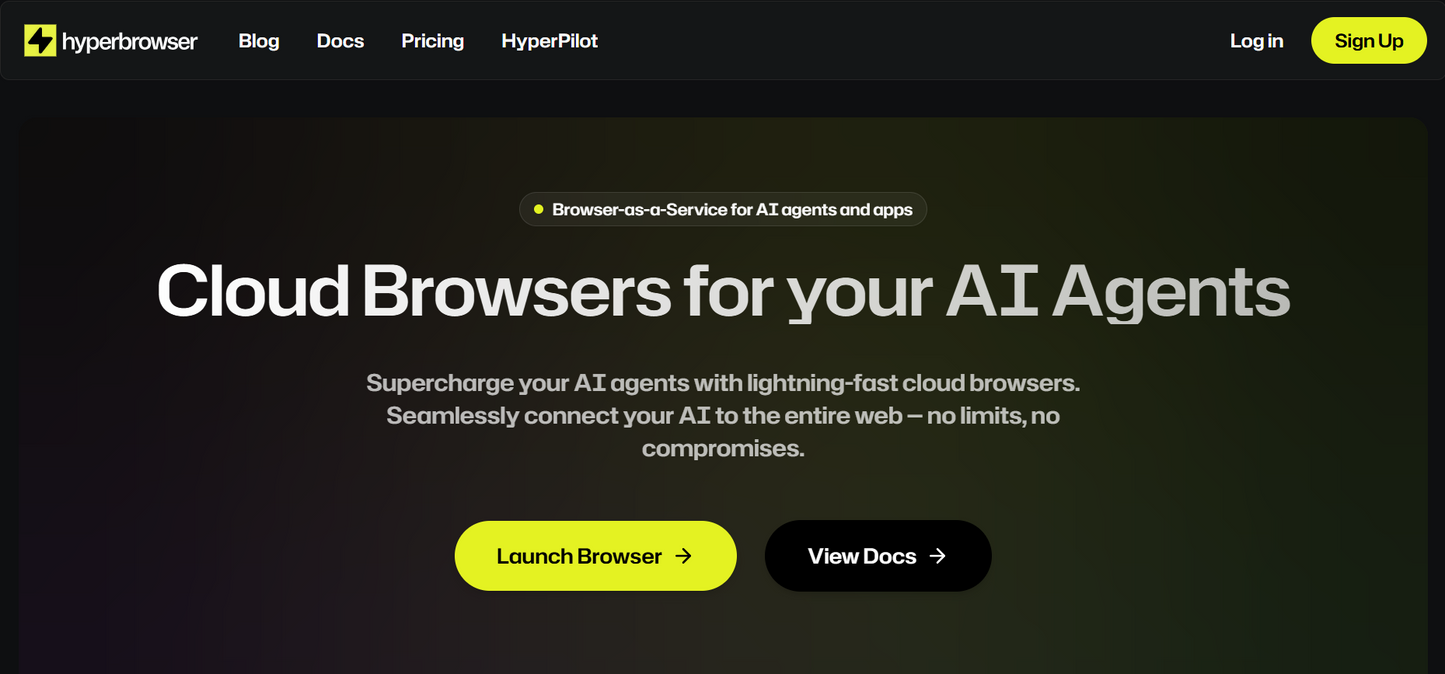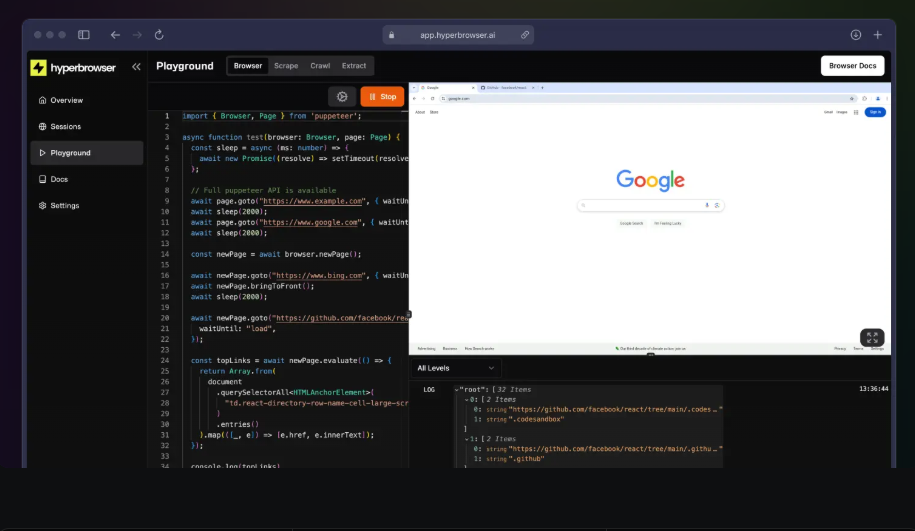HyperBrowser.ai: AI-powered efficiency and intelligent interaction 🧠🌐🚀
HyperBrowser.ai: AI-powered efficiency and intelligent interaction 🧠🌐🚀
Couldn't load pickup availability
HyperBrowser.ai represents a pioneering approach to interacting with the internet that goes beyond traditional web browsers. It positions itself as an AI-powered platform that aims to revolutionize web browsing, information gathering, and data analysis. At its core, it's about creating a smarter, more efficient, and personalized browsing experience that automates repetitive tasks and helps users gain deeper insights from the web.
Our purpose and vision
The primary purpose of HyperBrowser.ai is to fundamentally change the way we find, process, and use information online. We want to make the information overload manageable and enable users to interact with the web in a more intuitive and productive way.
Our vision is to transform the web into a dynamic, intelligent assistant that adapts to individual needs and not only delivers information, but also understands it in context and makes it usable. We envision a future in which the browser is not just a window to the web, but an active partner in knowledge work.
Core functions and capabilities (conceptual)
Based on the concept of an AI-powered "hyper-browser," HyperBrowser.ai could offer the following features:
-
Intelligent content analysis and summarization: 📝
-
Automatically summarize articles, reports, or web pages in real time to quickly capture the key information.
-
Extracting important data points, facts or arguments from long texts.
-
-
Improved search and navigation functions: 🔍
-
AI-powered search that not only matches keywords but also understands the user's context and intent.
-
Recommendations for related content or in-depth information based on current browsing behavior.
-
Automatically pre-filter search results to eliminate irrelevant or low-quality content.
-
-
Automated data extraction and web scraping: 📊
-
Easily extract structured data from websites, e.g. for research, price comparisons or market analysis.
-
Automate repetitive tasks such as filling out forms or collecting information across multiple pages.
-
-
Personalization and contextualization: 🤖
-
Adapting the browsing experience to individual preferences and usage patterns.
-
Providing information in relevant context, e.g. displaying definitions or background information about terms on a page.
-
-
Integration with other tools: 🔗
-
Potential interfaces to productivity tools, note-taking apps, or analytics software to seamlessly process collected data.
-
-
Improved security and privacy: 🛡️
-
Integrated AI features to detect phishing, malware, or dubious websites (hypothetical).
-
Advantages and target group
Using a hyper-browser with AI capabilities would offer the following benefits:
-
Massive time savings: Accelerates information gathering and analysis through automation and intelligent filtering. ⏱️
-
Increased productivity: Allows users to focus on the task at hand instead of repetitive browser operations. 🚀
-
Deeper insights: Helps find and connect relevant information faster, leading to better decisions. 🧠
-
Reduced information overload: Filters out noise and presents information in a digestible format.
-
Personalized experience: Adapts to individual needs and working styles.
Target group:
-
Knowledge workers and researchers: Who have to process large amounts of online information.
-
Data analysts and business intelligence experts: For efficient web-based data capture.
-
Digital marketers and SEO specialists: For market analysis, competitive monitoring, and trend identification.
-
Developers and automation enthusiasts: Who want to optimize or automate web interactions.
-
Anyone looking for a more efficient and intelligent way to browse.
Technology and Functionality (Conceptual)
A hyper-browser like HyperBrowser.ai would likely be based on a combination of advanced artificial intelligence:
-
Natural Language Processing (NLP): For understanding, summarizing and extracting text content.
-
Machine Learning (ML): For personalization, pattern recognition, and prediction of user needs.
-
Computer Vision: To understand visual elements on websites and capture data in a structured manner.
-
Automation frameworks: To perform actions in the browser without manual intervention.
This could be implemented as a standalone browser application, as a powerful browser extension, or as a cloud-based service that interacts with standard browsers.




